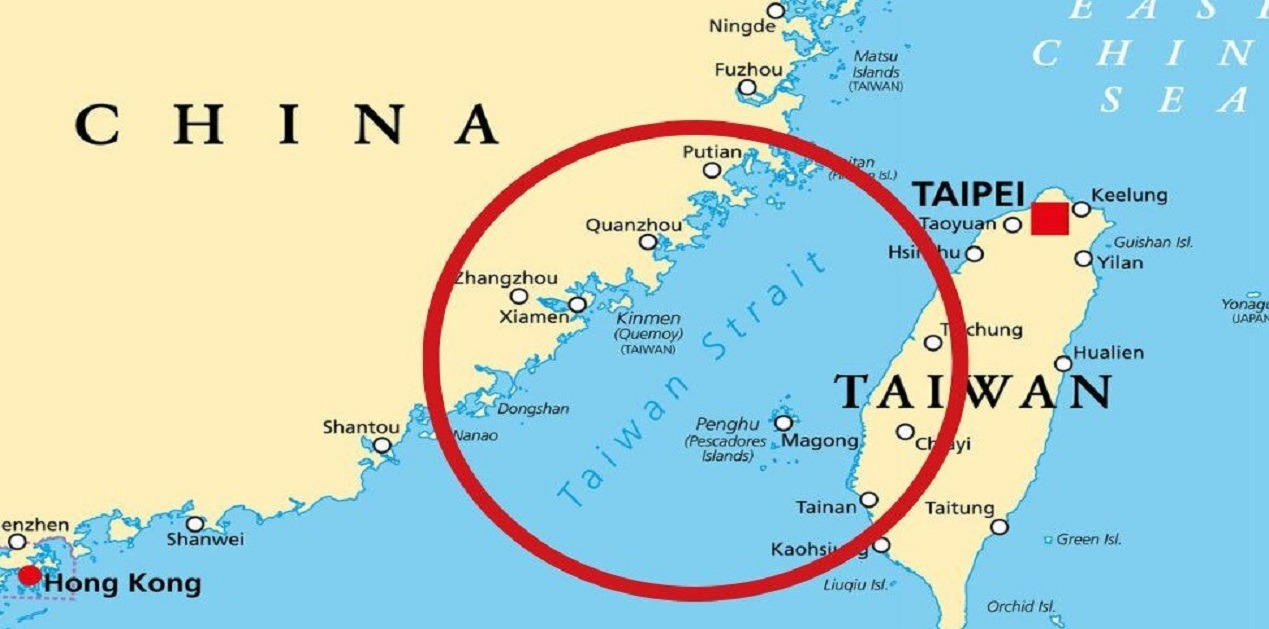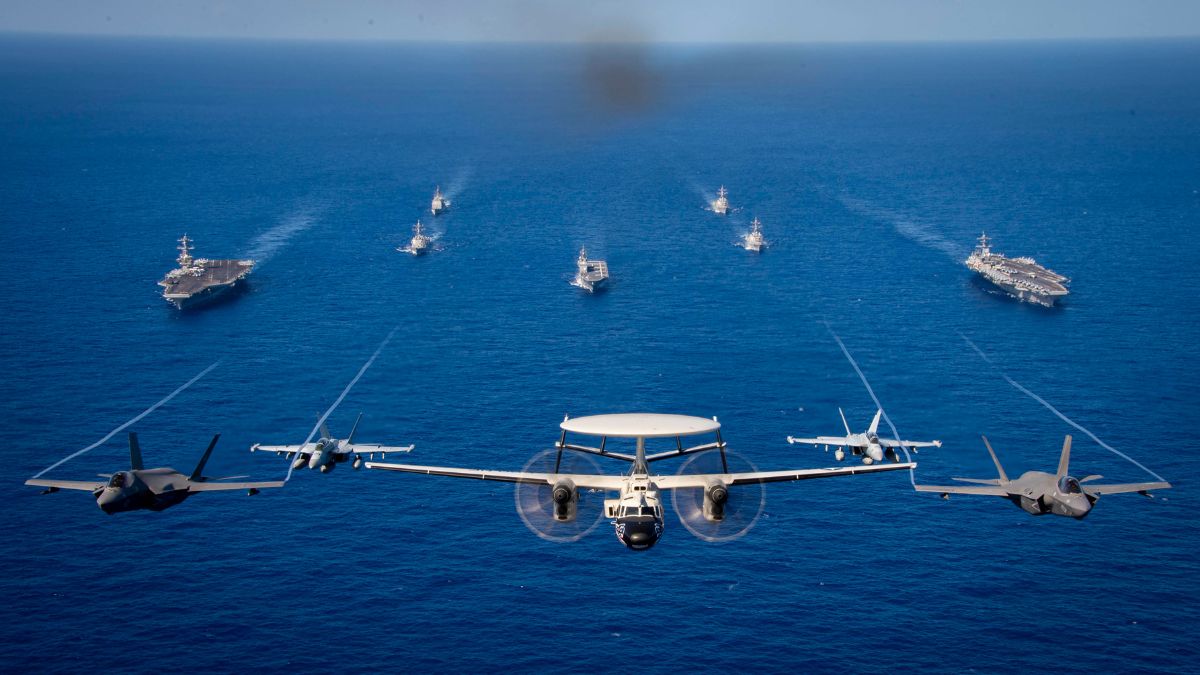Project 33: U.S. Navy Unveils New Plan To Counter China; Bets Big On Robotic & Autonomous Capabilities

The United States Navy has unveiled a new strategic document aimed at countering China’s growing military presence in the Indo-Pacific region. The document emphasizes the need to prepare for a potential conflict with China by 2027, citing PLA’s possible plans to invade Taiwan that year.
On September 19, the U.S. Navy unveiled a new strategic document focused on countering communist China’s aggression in the Indo-Pacific.
“The Chairman of the People’s Republic of China (PRC) has directed his forces to be prepared for war by 2027—our readiness will surpass theirs,” the document asserts.
The Navy’s navigation plan outlines two key objectives: preparing for potential conflict with China by 2027 and strengthening its long-term strategic advantage. To achieve these goals, the Navy aims to implement Project 33 and enhance its role within the Joint warfighting ecosystem.
Project 33: Strengthening Navy Capabilities
Central to the Navy’s strategy is “Project 33,” an initiative outlined in the 2024 Navigation Plan (NAVPLAN) for America’s Warfighting Navy. Chief of Naval Operations Adm. Lisa Franchetti describes this as “overarching strategic guidance to enhance our Navy’s readiness.”
The Navy aims to integrate proven robotic and autonomous capabilities by 2027, with a focus on their practical application in warfare scenarios.
The focus areas begin with addressing maintenance delays for ships, submarines, and aircraft. The next priority is scaling robotic and autonomous systems to quickly integrate more platforms.
Earlier this year, the Navy established a new role for drones and robotic warfare and commissioned a unit for unmanned operations in the Middle East.
AfriPrime App link: FREE to download...
Additional key areas include establishing command centers for success on a distributed battlefield, recruiting and retaining top talent, delivering quality service, investing in warfighter competencies, and restoring critical infrastructure that supports and projects power from shore.
China’s Taiwan Ambitions
The strategic document comes amid escalating tensions between China and Taiwan. Despite Taiwan’s de facto independence since 1949, China continues to view it as part of its territory and insists on eventual reunification, potentially by force.
Since Tsai Ing-wen of the Democratic Progressive Party (DPP) became Taiwan’s president in 2016, China has intensified its diplomatic and military pressure on the island. Tsai, along with DPP presidential candidate Lai Ching-te, advocates for Taiwan’s status as an independent state and rejects China’s claims.
AfriPrime App link: FREE to download...
https://www.amazon.com/Africircle-AfriPrime/dp/B0D2M3F2JT

Chinese state television recently aired a documentary series titled Quenching, offering a dramatic portrayal of a potential amphibious assault by the People’s Liberation Army (PLA) on Taiwan.
One episode featured a nationalistic display of military power, including drone operations, missile drills, and electronic warfare exercises, simulating an attack on Taiwan’s defenses.
Retired Rear Adm. Mike Studeman, former head of U.S. Navy intelligence, has warned that Chinese military forces are preparing for a potential invasion or blockade of Taiwan, possibly within the next decade.
According to a report by The Washington Times in April 2024, during discussions with Taiwan’s President Tsai Ing-wen, Vice President-elect Hsiao Bi-khim, and senior national security leaders, they expressed concerns over a Chinese invasion and the fear that the U.S. might “isolate and withdraw” from the international arena.
In June 2024, U.S. President Joe Biden indicated that he does not rule out using military force to defend Taiwan in the event of a Chinese invasion, reaffirming U.S. support for Taiwan’s defense capabilities.
Naval Power Dynamics
China’s naval capabilities have grown significantly in recent years. The U.S. would need robust naval capabilities to support Taiwan in a potential conflict with China, but it faces significant limitations. On the other hand, China’s naval strength continues to grow.
A 2024 report by the U.S. Congressional Research Service revealed that China’s navy surpassed the U.S. in the number of battleforce ships between 2015 and 2020.
With over 370 platforms, including submarines, amphibious ships, and aircraft carriers, China’s fleet is projected to expand to 395 ships by 2025 and 435 by 2030. China currently operates two aircraft carriers—the Liaoning and Shandong—and in May 2024, its third carrier, the Fujian, began sea trials.
In contrast, the U.S. Navy has approximately 292 active battleforce ships, with projections indicating a fleet of 290 ships by 2030. This disparity highlights the growing naval power gap between the two nations.

US Navy’s Strategic Challenges
The US Navy’s recent strategic document outlines key challenges it faces: “The Navy must address fundamental issues—ship, submarine, and aircraft construction, recruitment, munitions production, software acquisition, infrastructure, and maintenance—while continuing to outpace adaptive adversaries.”
The document stresses the urgency of integrating robotic and autonomous systems: “Nearer-term operational challenges demand that we integrate proven robotic and autonomous capabilities as soon as possible. We must do so with a focus on how we will use these systems in war. By 2027, we will integrate proven robotic and autonomous systems for routine use by the commanders who will employ them”.
It further emphasizes that meeting all objectives in the Navigation Plan is essential to fielding the people and capabilities required to win in 2027 and beyond. The Navigation Plan emphasizes the importance of collaboration with Congress to secure critical supply chains and envisions maritime operations centers at every fleet headquarters.
“By 2027, the Navy will be prepared for sustained combat as part of a Joint and Combined force, prioritizing the PRC as the primary challenge and focusing on empowering the joint warfighting framework,” the document noted.
As global tensions continue to rise, the U.S. Navy’s strategic preparations underscore the complex and evolving nature of international maritime security in the Indo-Pacific region.
AfriPrime App link: FREE to download...
- Questions and Answers
- Opinion
- Motivational and Inspiring Story
- Technology
- Live and Let live
- Focus
- Geopolitics
- Military-Arms/Equipment
- Segurança
- Economy
- Beasts of Nations
- Machine Tools-The “Mother Industry”
- Art
- Causes
- Crafts
- Dance
- Drinks
- Film/Movie
- Fitness
- Food
- Jogos
- Gardening
- Health
- Início
- Literature
- Music
- Networking
- Outro
- Party
- Religion
- Shopping
- Sports
- Theater
- Health and Wellness
- News
- Culture

